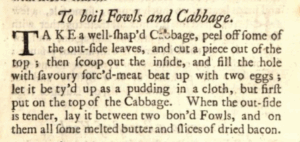The Weekly Feast – Cabbage and Beef Soup
Happy September!!!
We’re doing our best to eat healthy around here, but we also want food that tastes good. I love soup (hubby not so much, but oh well), and with the cooler weather arriving, I plan on making a lot of soups. You can pack a ton of flavor into soup that is almost calorie free, where making the “regular” version of it would blow your diet to smithereens. So soup, here I come! This one tastes sort of like the innards of a lasagna, honestly.
Ingredients:
- 1 tbsp olive oil
- 1 large onion (finely chopped)
- 2 cloves garlic (minced)
- 1 lb lean ground beef
- Salt and black pepper (to taste)
- 14 oz can chopped tomatoes
- 6 cups shredded cabbage
- 1 tsp paprika
- 1 tsp garlic powder
- 1 tsp onion powder
- ½ tsp oregano
- ½ tsp thyme
- 1 bay leaf
- 5 cups beef broth
- Parsley (chopped)
Pre-heat a soup pot to medium-high heat and add the olive oil. Add in the chopped onion and cook for 2-3 minutes until they have slightly softened. Add in the garlic and let it cook for about 30 seconds, or until fragrant. then, add the ground beef, salt, and black pepper. Cook for 7-8 minutes, breaking the meat apart with a spatula.
Add in the chopped tomatoes, shredded cabbage, paprika, garlic, onion powder, oregano, thyme and bay leaf. Mix it all together very well. Pour in the beef broth, stir it, and let it simmer for 25 minutes or so until the cabbage fully cooks. A little longer is okay, as this stuff only tastes better as time goes on.
Season with salt and black pepper to taste. Garnish with parsley before serving.
Notes:
I put shredded cheese on the table to add some fat, because this soup does NOT have a lot of it. I did drain the ground beef before moving on with the recipe. You could add a dollop of cream cheese to this, or some spicy peppers, and it would still be good. If you switched out the tomatoes for one of those 14 oz cans of tomatoes and green chilies you can get in the Mexican aisle, then topped it with tortilla strips, you’d have Mexican tortilla soup. All I know is this stuff was delish, a huge bowl of it is only about 300 calories (if made as written), and maybe not even that much.











